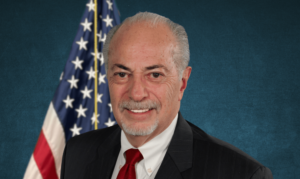We’re going to have a unique opportunity this summer.
Usually we vote for politicians who vote on taxes, but this July, we taxpayers can directly vote against an increase in our sales tax from 6 cents to 7 cents (that’s a 17 percent increase).
I’m referring, of course, to a referendum by all 10 counties in the Atlanta Special District to raise money for transportation projects.
The tax would last 10 years and approval will be decided by the entire district tally: if every Fayette voter disapproves of the increase, we’ll still be forced to pay if a majority of all district voters approve the measure.
The stated intent for the new $7-8 billion is to pay for 157 transportation projects throughout the district. There’s some questionable language on the ballot that the governor’s office has yet to clarify, however, leading to concerns that some of our taxes may go to other districts or for “programs.”
Certainly, there are some needed projects on the list to help alleviate gridlock, which is one of the two purposes of the effort (the other purpose is a matter for a separate discussion).
Notably, 52 percent of the new money is earmarked for the exorbitant price and unsustainable operating costs of transit: bus & rail — think MARTA. TIA-M-028 alone has a project cost of $137,000 for each of its 5,100 riders.
That may make sense if half the commuters used transit, but only 3 percent of commuters use rail and 2 percent take the bus (Ga. Department of Transportation 2010 Atlanta Regional Commuter Survey).
It also might make sense if ridership mirrored the district’s population growth. Over the last census decade, though, district population rose 20 percent while rail ridership fell 6 percent and bus by 17 percent.
If those new residents didn’t boost ridership, what evidence suggests that the next decade’s growth will?
Consider too that riders pay only 25 percent of a ride’s operating costs, with non-users paying the remaining 75 percent. Rider fares and existing tax subsidies still left MARTA with a $508 million operating loss in 2010 and deferred maintenance that Chief Executive Beverly Scott said would reach $2.9 billion over the next decade.
An aside: I asked Davis Allen, MARTA’s CFO, when their Annual Report would be posted for FY 2011, which ended last June 30.
He responded, “Mid to late January [2012].”
Consider that Delta Airlines’ global operations generate $32 billion and they comply with SEC requirements to post their reports within 60 days of the end of their fiscal year. MARTA operates in a few counties, has revenue of $122 million and cannot report within 200-plus days.
Up through July 31 of this year, proponents want more of your earnings to double down on this “too big to fail” enterprise, and will bombard you with rosy projections of its benefits. Look at actual performance compiled over 50 years as you look at their multi-million dollar promotional campaign.
This reminds me of the wife who comes home early to find her husband in bed with another woman. As she views the obvious truth, her husband casually dons his robe, maintains complete composure, and challenges her in his most confident voice, “Are you going to believe what I’m about to tell you, or your lying eyes?”
A unique opportunity — exercise it!
Bob Ross
Peachtree City, Ga.











Leave a Comment
You must be logged in to post a comment.